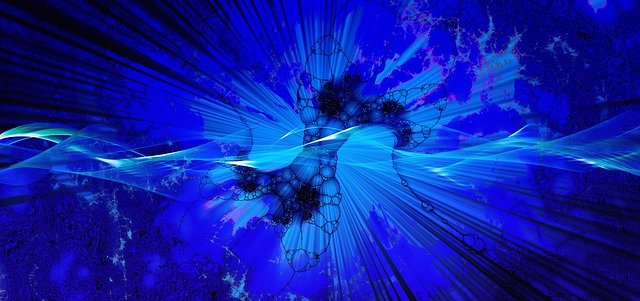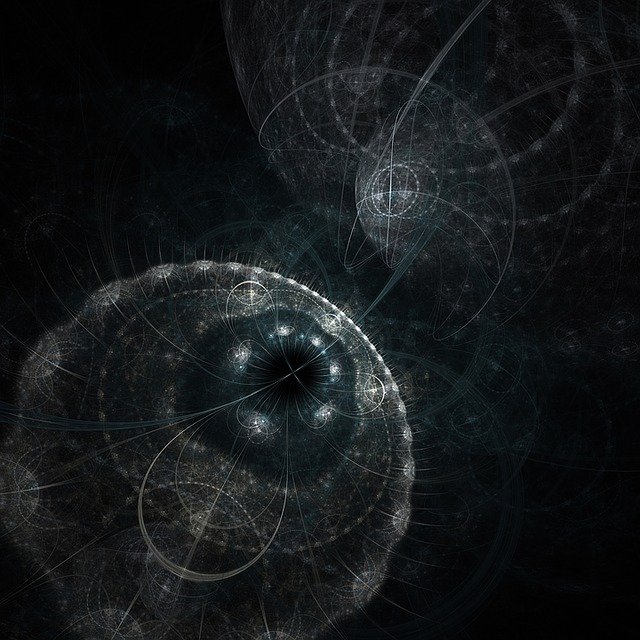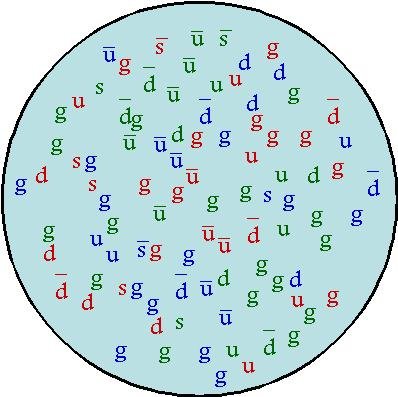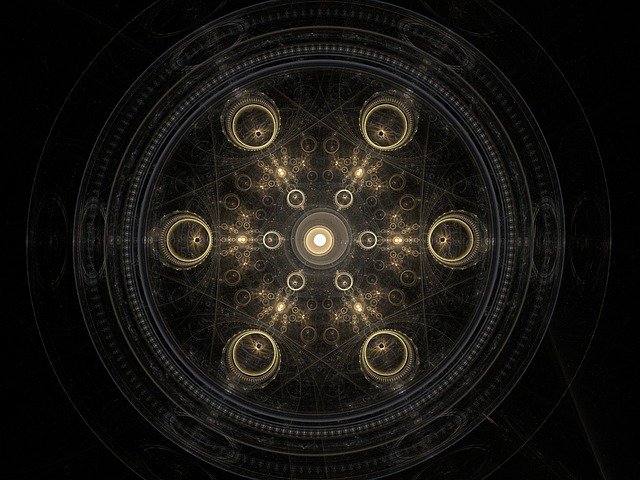Journey through the understanding of particle physics - Two

[image credits - PixaBay]
This is the second post in my series about my journey in trying to understand the world of particle physics through my reading of other posts on Steemit and online research.
In my previous post I described what I had learn with regards to certain particles and some of their properties when measured by the LHC detector such as pseudorapidity and transverse momentum.
The particles discussed were electrons, muons, photons and jets.
This is only a subset of known particles.
Particles are divided into two main groups: fermions and bosons.
Fermions
Fermions are particles with mass and therefore can have a momentum (think "inertia" in classical physics) and constitute all the matter around us that you can touch.
Fermions include particles such as quarks, electrons and muons.
Fermions obey the Pauli exclusion principle which states that no 2 fermions of the same type can be in the exact same states at any given time. For example this implies that two electrons sharing the same spin cannot share the same orbital level in an atom. As electrons can only have 2 spin values (1/2 and -1/2) this limits the number of electrons per orbital to 2.
Fermions tend to clutter together into "lumps" of mass but for this they need the contribution of bosons.
Bosons
Bosons are carrier particles which don't have mass (and therefore travel at the speed of light). They are qualified as carrier particle because these particles carry the different forces of nature: electromagnetic force, weak nuclear force, strong nuclear force and gravity.
Each force is the result of a specific type of boson being exchanged between fermions which can interact with this boson.
Bosons cause attraction or repulsion between particles which can interact with them. You can think about it as particles travelling at the speed of light. When they meet a compatible fermion, the either "pull" the fermion in the direction it came from, or "push" the fermion in its own direction of travel. This may be inaccurate but it is how I visualize this.
For example, photons are the bosons carrying the force of electromagnetism causing the negatively charged side of a magnet to attract the positively charged side of another magnet.
I assume here that there are different types of photons since I'm not sure those photons emit any kind of light (visible or not). I could be wrong about this.
Another example are gluons. Gluons can interact with quarks and pull them together. Without gluons the universe would be a sea of quarks and no atom could be formed.

[Image credits - Pixabay]
Now, one thing that I do not understand yet is how bosons are created. I assume that for a force to be constant between fermions a constant production of bosons must also exist and exchanged between those fermions.
So this raises 2 important questions for me:
- Where are bosons created? Inside fermions?
- If bosons are consumed when they interact with another particle, what is causing the endless supply of bosons?
- Forces like gravity operate in all directions with the same properties (strength). How is this compatible with the discrete number of bosons?
Structure of the proton
As its name suggests the LHC generates collisions between hadrons which are energetic enough to rip apart the internal structure of these particles and cause sub-elements to break free and sometimes interact with each other or the LHC sub-detectors.
The LHC detector (there is in reality a couple of distinct detectors: Atlas, CMS, Alice, etc) is in reality a clever assembly of of sub-detectors made of different materials (e.g. silicon, lead, etc).
Each sub-detector is capable of detecting certain particles because those particles can interact with the material of that detector which result in electric signals that can be interpreted by scientists
Hadrons refer to composite particles made of quarks held together by one of the four forces of nature: the strong nuclear force.
Most known hadrons include protons (positively charged) and neutrons (electrically neutral). Indeed many experiments taking place in the LHC involve the repeated collision of protons.
Now I always wondered why so many particles where detected following the collision of two protons since I learned at school and through various media that a proton is made of 3 quarks: 2 up quarks and 1 down quark.
This is not correct.
In reality each proton is made of a very large amount of many types of quarks, anti-quarks and gluons.

[Image credits - Matt Strassler]
The internals of a proton is a real mess of many, many particles moving at frantic pace (close to the speed of light) in all directions, only held together by the gluons which carry the massive strong nuclear force.
But it turns out that all these sub-particles almost balance each other. For example, there are as many top quarks as anti top-quarks.
However there is just an imbalance of 2 up quarks (versus anti up-quarks) and 1 down quark (versus anti down-quarks).
When two protons are collided with enough energy (opposite velocity), the nuclear force is not enough to keep the structure intact and many of the proton constituents are propelled against each other and in all directions.
This causes some particles to react with each other and turn into other particles.
In all this chaos, certain properties of the system are preserved, while other properties are not preserved.
As an example of preserved property, the total angular momentum of all produced particles always match the total angular moments of the hadrons (and all their constituent) before the collision.
On the other hand, the total mass of the particles involved before and after the collision is rarely preserved. Instead some of the original mass is converted into energy (E=mc^2) and vis versa.
The Standard Model
The Standard Model is the physics theory describing the weak nuclear force, the strong nuclear force and the electromagnetic force and their interactions with fermions.
The standard model has proved to be extremely accurate over decades of scientific experiments. Mathematical predictions have never failed to be in line with experimentation and it is therefore logical to think that this model cannot be entirely wrong.
However the standard model falls short to explain all physical laws of nature.
Most notably the standard model does not describe the laws of gravity: the general relativity.
It also cannot describe the huge discrepancy between the weak nuclear force and gravity (4x10^29^!) referred to by physicists as the hierarchy problem.
Recent astronomical measurements have also suggested that the universe is significantly more massive than previously thought, raising the possibility of a new type of matter name Dark Matter.
The shortcomings of the Standard Model have caused many physicists to go on a quest to find a new theory that would explain all of the above issues.
That new theory would have to be compliant with previous experimentation. As such it would be viewed as a more complete theory of nature than the Standard Model, similar to how General Relativity relates to the Newtonian laws of motion and attraction.
One such theory is Supersymmetry
Supersymmetry
Supersymmetry is one of the leading, but yet unverified, theories to fill the gaps left by the standard model.
As its name suggests it also brings in a certain beauty in people minds because it brings in an element of symmetry at the heart of nature.

[Image credits - Pixabay]
At its core Supersymmetry predicts that every known particle has a counterpart, a "superpartner".
For example an electron would have a superpartner called "selectron", a quark would have a superpartner called a "squark", and so on.
Each particle and its superpartner would have all the same properties (mass, charge, etc) but one: their spin would differ by 1/2.
The spin is one of the fundamental properties of particles which is similar to angular momentum in classical physics. It has many resemblance with the concept of an object spinning around its axis such as a planet or a spinning top.
However there are several differences.
For example, the spin of particles can only take certain fixed values, while macroscopic objects can take any value.
The problem with Supersymmetry is that no superpartner particle has ever been detected in the LHC.
From what I understand it is now believed by many scientists that, if the theory is correct, superpartner particles may be more massive than known particles.
The energy limitation of LHC makes it difficult for now to detect those particles though it looks like a future run of the accelerator may yield to results in that field.
What I understand so far about Supersymmetry is still very very limited but I suspect that my next posts in this series will concentrate on that theory.
Research paper used for @lemouth's exercise
Let's now get back to @lemouth research paper which is at the center of his recent exercises
Let's review the title:
Search for top-squark pair production in final states with one lepton, jets, and missing transverse momentum using 36 fb−1 of √ s = 13 TeV p p collision data with the ATLAS detector
So, I haven't delve any deeper into the paper since my last post due to a lack of time but at least I understand that the paper is describing the hunt for the discovery of a top-quark superpartner, the top-squark.
With this in mind I will now focus on improving my own understanding of Supersymmetry and how this relates to the above research paper and @lemouth programming exercises.
References
- Of Particular Significance - Conversations About Science with Theoretical Physicist Matt Strassler
- About my own research: gluons, gluinos and sgluons are not weird creatures from Harry Potter by @lemouth
- Supersymmetry on Wikipedia
Other posts in this series
- https://steemit.com/utopian-io/@irelandscape/journey-through-the-understanding-of-particle-physics-one
- Pauli Exclusion Principle on Wikipedia
- Spin on Wikipedia
- Standard Model on Wikipedia
Go here https://steemit.com/@a-a-a to get your post resteemed to over 72,000 followers.
I guess I passed my school time in stone age.
STOPHello @irelandscape
I am not following @lemouth's exercise because everything appeared foreign to me. However, with your definitions of some of the terms, the whole concept looks a little bit appealing. Perhaps I will have to study more to grab the whole concept. Parhaps I will give it a try, though havent concluded on that. But do you think someone with only elementary knowledge of physics stand a chance here?
Regards.
@eurogee of @euronation and @steemstem communities
Yes all you need is some programming knowledge.
@lemouth is guiding us through the bits of physics necessary to complete the exercises but no prior knowledge is required.
It's a great opportunity to grab some fragments of knowledge in that field. Obviously that's not going to make particle physicists out of us!😁
Thanks for your response but this...
...is a no no for me. 😢
I'm really digging how much @lemouth's little exercise has inspired people to go out and learn.
:)
I still need to comment this post. @irelandscape: this is on the to-do list for tonight, don't worry ;)
Not to worry, I'm sure there are a few corrections. ;-)
I learn afterwards that the superpartners of fermions are bosons, and vis versa.
That will be discussed in my next post I guess.
Done by the way ;)
Yes, that's one of the nice things about the exercise.
I would feel very unsatisfied to develop code for something I have no clue about.
At least if I can grasp some of the concepts (without the maths), that would be a success for me.
Hopefully I can pass that on to others in the form of these posts.
Hi @irelandscape!
Your post was upvoted by utopian.io in cooperation with steemstem - supporting knowledge, innovation and technological advancement on the Steem Blockchain.
Contribute to Open Source with utopian.io
Learn how to contribute on our website and join the new open source economy.
Want to chat? Join the Utopian Community on Discord https://discord.gg/h52nFrV